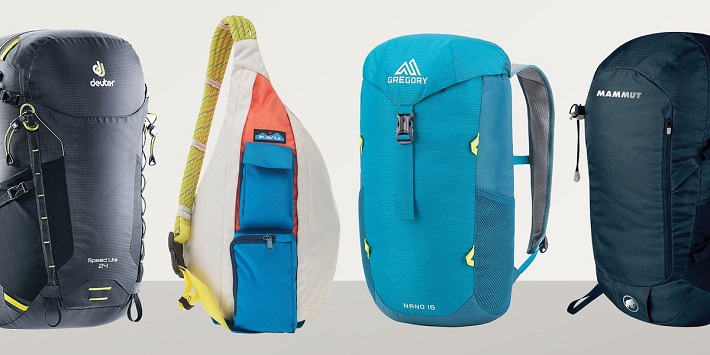Australia has a lot of extraordinary places to visit, and with the busy lifestyle we have today, it’s no wonder that the number of Australians who go hiking has increased significantly over the last few years. Beneficial for the body, mind and soul, hiking can certainly improve your life.
It goes without saying that hiking will give your mind a break, but it still requires a great deal of forethought and preparation before you hit the trail. There’s a lot of gear that’s suggested to take with you and you will need a ‘transporting device’ to conveniently store it all – aka a hiking daypack. And while all daypacks may look the same to you, the truth is that there are all kinds of types that differ in purpose and functionality.

Source: switchbacktravel.com
Consider Your Daily Activity
When it comes to taking your pick from the many hiking daypacks Australia hikers recommend considering the activity you plan to engage in. For instance, almost all quality hiking daypacks Australia camping stores sell have water bottle pockets on each of their sides. They also might be compatible with hydration reservoirs which is great when planning on going for a longer hike. Besides the actual hiking day pack, you can also choose from the many types of torso size options and different suspension designs. Ranging in size and design, finding the one that you need won’t be difficult at all.
Think of the Daypack’s Capacity
The capacity of a daypack for hiking can vary greatly in order to meet the different needs of hikers. Overall, most daypacks range from 10 to 50 litres.
Smaller Packs (10 litres or less)
These small packs can be 10 or less than 10 litres and are designed for a lighter daily activity like short hikes, road biking or running on shorter distances. Although smaller, these daypacks offer enough room for storing the essentials like water bottle, torch, lighter jacket, phone, keys and some snacks.
Packs of 11 – 20 Litres
Generally speaking, these daypacks are larger than the previous models and are also designed for hiking, road and mountain biking, running and travelling on longer distances. Featuring extra pockets and having more space, these daypacks will help you stay more organised while also allowing you to carry more than just your keys and water bottle.
Packs of 21 – 35 Litres
Without a doubt, this is one of the most commonly used sizes of daypack for travelling and hiking. And, the reasons for this are more than obvious. They are more spacious and allow the hiker to carry more than just food and some other essentials. These daypacks are big enough to store food, extra clothing and accessories, cameras, books, etc.
Packs of 36 – 50 Litres
As the name implies, these packs are the largest and are designed for trips that require more clothing and gear. Usually, they are used for climbing, non-summer hiking and mountaineering.

Source: popularmechanics.com
Think of the Daypack’s Construction
Frame Type
Frameless
These packs are lighter in weight and quite compact, but their main downside is that they can’t support a lot of weight. In other words, the frameless types of daypacks are ideal for lighter loads.
Internal Frame
The internal frame of a daypack is designed to support the weight you’re carrying. Depending on the brand and model you choose, some of them can have aluminium rods to support the load while others can be made of plastic frame sheets which makes it quite light. When compared to the frameless, the internal frame packs are designed to carry heavier loads.

Source: rei.com
Pack Access
Unlike backpacks, daypacks can have different pack access. While the top loading design is the most commonly used, you can also choose between front, bottom and side pack access. The front access offers the main storage compartment that can be fully opened with the help of a zipper.
The bottom daypacks have bottom access to the interior in addition to the front or top opening. This allows easy access to the staff you keep at the bottom of the pack without having to take everything out. Similar to bottom packs, the side pack access allows for easier access to clothing and gear inside the pack.
Consider Its Fit
As with everything else, choosing the right fit can certainly make your hiking more comfortable and easy. So, in other words, you should choose a pack size that is appropriate for your torso length and one that has a comfortable snug grip on your hips. Extra small, small and large are the usual sizes of packs from which you can choose, which will certainly ease your choice in finding the right one for your torso length.
How to Pack a Day Pack for Hiking?
Now that you know how to choose a backpack, it is time to learn more about how to pack in order to use all of the space wisely. When done, choose the place you want to visit and enjoy your hike.



